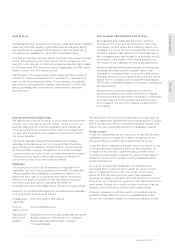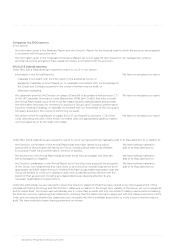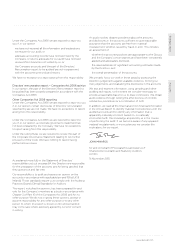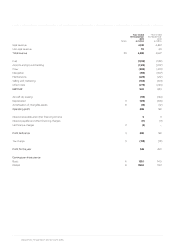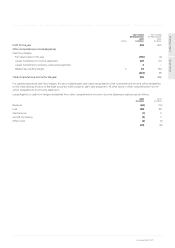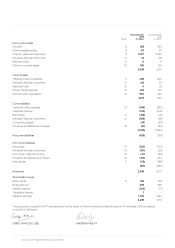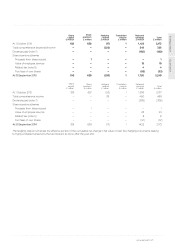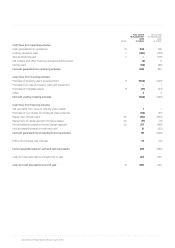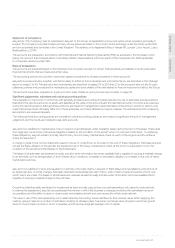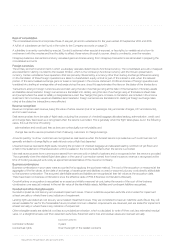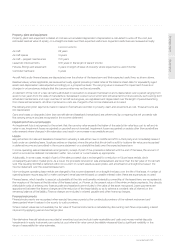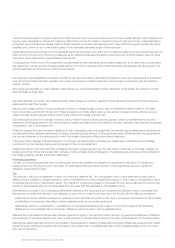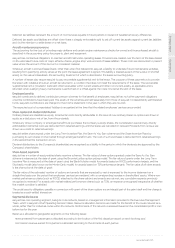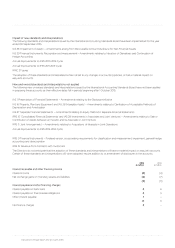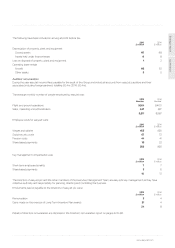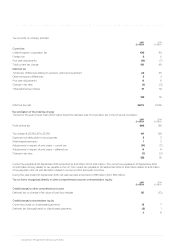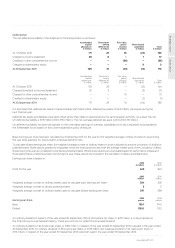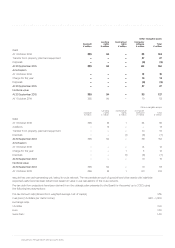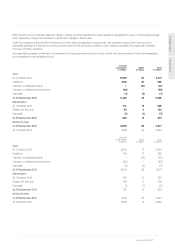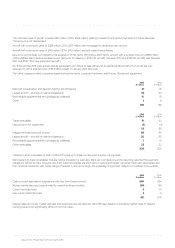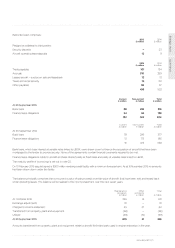EasyJet 2015 Annual Report Download - page 101
Download and view the complete annual report
Please find page 101 of the 2015 EasyJet annual report below. You can navigate through the pages in the report by either clicking on the pages listed below, or by using the keyword search tool below to find specific information within the annual report.
Strategic report Governance Accounts
97
www.easyJet.com
Property, plant and equipment
Property, plant and equipment is stated at cost less accumulated depreciation. Depreciation is calculated to write off the cost, less
estimated residual value of assets, on a straight-line basis over their expected useful lives. Expected useful lives are reviewed annually.
Expected useful life
Aircraft 23 years
Aircraft spares 14 years
Aircraft – prepaid maintenance 7-10 years
Leasehold improvements 5-10 years or the length of lease if shorter
Fixtures, fittings and equipment 3 years or length of lease of property where equipment is used if shorter
Computer hardware 5 years
Aircraft held under finance leases are depreciated over the shorter of the lease term and their expected useful lives, as shown above.
Residual values, where applicable, are reviewed annually against prevailing market rates at the balance sheet date for equivalently aged
assets and depreciation rates adjusted accordingly on a prospective basis. The carrying value is reviewed for impairment if events or
changes in circumstances indicate that the carrying value may not be recoverable.
An element of the cost of a new aircraft is attributed on acquisition to prepaid maintenance and is depreciated over a period ranging from
seven to ten years from the date of manufacture. Subsequent costs incurred which lend enhancement to future periods, such as long-term
scheduled maintenance and major overhaul of aircraft and engines, are capitalised and depreciated over the length of period benefiting
from these enhancements. All other maintenance costs are charged to the income statement as incurred.
Pre-delivery and option payments made in respect of aircraft are recorded in property, plant and equipment at cost. These amounts are
not depreciated.
Gains and losses on disposals (other than aircraft sale and leaseback transactions) are determined by comparing the net proceeds with
the carrying amount and are recognised in the income statement.
Impairment of non-current assets
An impairment loss is recognised to the extent that the carrying value exceeds the higher of the asset’s fair value less cost to sell and its
value in use. Impairment losses recognised on goodwill are not reversed. Impairment losses recognised on assets other than goodwill are
only reversed where changes in the estimates used result in an increase in recoverable amount.
Leases
easyJet enters into sale and leaseback transactions whereby it sells either new or mid-life aircraft to a third party and immediately leases it
back under an operating lease. Surpluses arising on disposal, where the price that the aircraft is sold for is above fair value, are recognised
in deferred income and amortised in the income statement on a straight-line basis over the expected lease term.
In some operating sale and leaseback arrangements, receipt of part of the proceeds is deferred until the end of the lease, the amount of
which is recorded as deferred consideration within non-current or current assets as appropriate.
Additionally, in some cases, receipt of part of the sales proceeds due is exchanged for a reduction in future lease rentals, which
consequently are below market price. As a result, the proceeds received on sale and leaseback are lower than the fair value of the aircraft
sold. The resulting shortfall is deferred within non-current or current assets as appropriate, and amortised on a straight-line basis in the
income statement over the expected lease term.
Non-contingent operating lease rentals are charged to the income statement on a straight-line basis over the life of the lease. A number of
operating leases require easyJet to make contingent rental payments based on variable interest rates; these are expensed as incurred.
Finance leases, which transfer to easyJet substantially all the risks and benefits incidental to ownership of the leased item, are recognised at
the inception of the lease at the fair value of the leased asset, or, if lower, at the present value of the minimum lease payments. Any directly
attributable costs of entering into financing sale and leasebacks are included in the value of the asset recognised. Lease payments are
apportioned between the finance charges and the reduction of the lease liability so as to achieve a constant rate of interest on the
remaining balance of the liability. Finance charges are included in interest payable and other financing charges.
Financial instruments
Financial instruments are recognised when easyJet becomes a party to the contractual provisions of the relevant instrument and
derecognised when it ceases to be a party to such provisions.
Where market values are not available, the fair value of financial instruments is calculated by discounting cash flows at prevailing interest
rates and by applying year end exchange rates.
Non-derivative financial assets
Non-derivative financial assets are recorded at amortised cost and include trade receivables and cash and money market deposits.
Investments in equity instruments are carried at cost where fair value cannot be reliably measured due to significant variability in the
range of reasonable fair value estimates.


